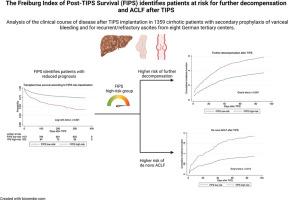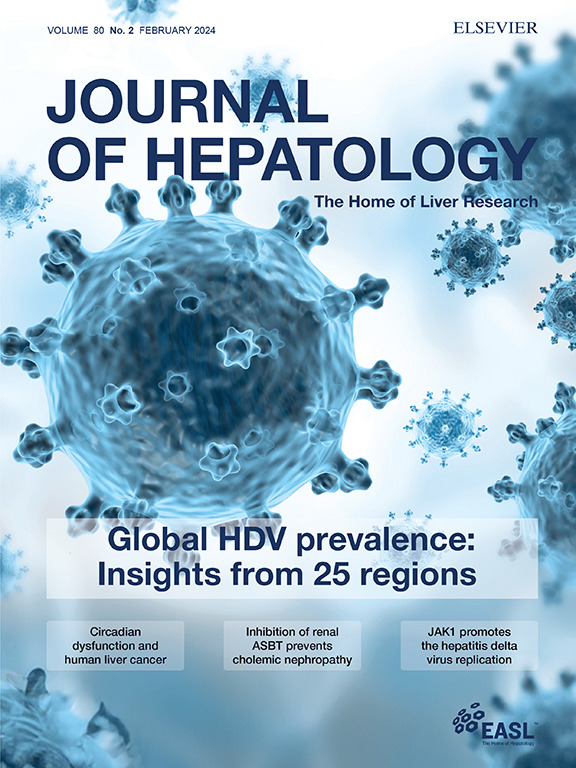The Freiburg Index of Post-TIPS Survival (FIPS) identifies patients at risk for further decompensation and ACLF after TIPS
IF 26.8
1区 医学
Q1 GASTROENTEROLOGY & HEPATOLOGY
引用次数: 0
Abstract
Background & Aims
The Freiburg Index of Post-TIPS Survival (FIPS) defines a high-risk group of patients with significantly reduced survival following transjugular intrahepatic portosystemic shunt (TIPS) implantation. However, the clinical hallmarks responsible for these patients’ unfavorable outcome remain to be identified. Therefore, the present study aimed to characterize the clinical course after TIPS implantation according to the FIPS.Methods
A total of 1359 patients with cirrhosis allocated to TIPS implantation for treatment of recurrent or refractory ascites or secondary prophylaxis of variceal bleeding from eight tertiary centers were retrospectively included. The patients’ clinical course following TIPS placement was analyzed, stratified according to the FIPS. Primary study outcome was further decompensation of cirrhosis within 90 days after TIPS, secondary outcomes were acute-on-chronic liver failure (ACLF) within 90 days and one-year transplant-free survival.Results
Further decompensation after TIPS implantation was significantly more frequent in FIPS high-risk patients compared to low-risk patients (cumulative incidence function 0.58 vs. 0.38, p < 0.001). Moreover, FIPS high-risk patients developed ACLF significantly more often (0.18 vs. 0.08; p = 0.008). Uni- and multivariable competing risk regression analyses confirmed that the FIPS high-risk group independently predicted further decompensation (sHR 1.974, 95 % CI 1.531 – 2.544, p < 0.001) and ACLF after TIPS (sHR 2.586, 95 % CI 1.449 – 4.616, p = 0.001). Importantly, further decompensation and ACLF after TIPS were associated with significantly reduced transplant-free survival.Conclusions
The present study reveals that the FIPS predicts development of further decompensation and ACLF after TIPS implantation. These events are responsible for impaired transplant-free survival in FIPS high-risk patients. These results pave the way for the development of tailored clinical management strategies.

求助全文
约1分钟内获得全文
求助全文
来源期刊

Journal of Hepatology
医学-胃肠肝病学
CiteScore
46.10
自引率
4.30%
发文量
2325
审稿时长
30 days
期刊介绍:
The Journal of Hepatology is the official publication of the European Association for the Study of the Liver (EASL). It is dedicated to presenting clinical and basic research in the field of hepatology through original papers, reviews, case reports, and letters to the Editor. The Journal is published in English and may consider supplements that pass an editorial review.
 求助内容:
求助内容: 应助结果提醒方式:
应助结果提醒方式:


